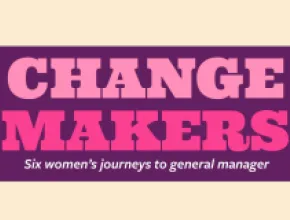If current meetings industry booking trends continue, 2011 may turn out to be one of the last best years for buyers in the foreseeable future.
While some first-tier destinations are now able to call the shots during negotiations, especially for last-minute availability, good values can still be found in a wide variety of locations.
According to figures from Smith Travel Research, recovery is moving at differing paces across the country. While high-demand cities like New York and Boston showed ADR (average daily rate) increases above 5 percent for 2010, other cities such as Philadelphia and Nashville saw decreases of 7 percent and 5 percent, respectively.
The forecast is for hotel rates to inch higher or remain constant in most destinations. Because a majority of hotel occupancies remain below 60 percent, hoteliers will continue in a negotiating pattern that benefits buyers.
As the industry continues its climb back from a historic recession, consultants and city promoters say planners will get favorable contracts, even at new and renovated facilities. Group business, they say, is the slowest to recover from the economic woes of the past couple of years.
The global economic downturn and new hotel openings have had an impact on occupancy numbers everywhere. New projects were funded before the recession, completed during the downturn and contributed to occupancy declines that pushed some locales deeper into a buyer’s market with inventories they could not fill. Today, this means even greater value for groups.
Demand Trends
"Demand for space in 2010 returned quicker than we anticipated, so occupancies have gone up faster than we expected, but average daily rates have lagged," says Robert Mandelbaum, director of research information services for Colliers PKF Hospitality Research. "This is typical of economic recovery periods.
"Because there is lingering trauma among hoteliers about record declines that happened in 2009 and because hotel managers tend to negotiate with a mindset on current market conditions, we don’t expect rates to rise much during 2011," he continues. "It will likely be 2012 before rates move us into a seller’s market advantage."
While acknowledging that there is mounting pressure from some corners of the hotel industry to raise rates, Mandelbaum notes that caution prevails.
"Large hotels are dependent on group business," he says. "They operate most successfully when large groups are in residence. During the recession, they tried to replace groups with transient and local travelers, but that is not what they are designed for. They need groups coming in and they probably won’t raise rates much until after 2011."
Michael Gehrisch, president and CEO of Destination Marketing Association International, agrees.
"Demand is certainly coming back, but there is good value across the board for 2011," he says. "It is definitely not yet a seller’s market. Value is still king.
"From the buyer’s viewpoint, value is still good through the new year, even though pricing is recovering," he continues. "By 2013, I think we’ll see a different picture. For one thing, there will be a new ad campaign next spring to stimulate inbound U.S. travel. We expect that to kick in the numbers by 2013 and 2014."
Good Value Choices
So where can planners find great values as the year progresses?
Have a look at the Big Easy, says Nikki Moon, vice president of sales for the New Orleans CVB, emphasizing that $500 million has gone into hotel infrastructure over the past five years, and the city is eager for group business.
"There’s a lot of competition out there, and we want to be as smart as we can," she says. "Our inventory is fresh, and new restaurants continue to come aboard—more than in our history. Meetings are a mainstay in our city, so we are doing whatever we can to make a visitor welcome and come back. Our bureau is also about making it easy for meeting planners to mount a convention here, with many services for attendance-building and so on."
Among New Orleans standout new and renovated hotel offerings are The Roosevelt New Orleans and a 200-room Hotel Indigo. Opening next fall is an all-new Hyatt Regency New Orleans Hotel bearing little resemblance to its pre-Katrina visage.
In Texas, group space is filling up slowly for 2011, according to Randy McCaslin, vice president in the Houston office of Colliers PKF Consulting.
"Year 2011 is a mixed picture because most markets are not strongly booked for conventions," he says. "Texas has maintained a stronger economy than much of the country and has a strong hospitality basis.
"But for most cities, the year is not good yet for groups," he continues. "So there are excellent opportunities for short-term bookings in Houston, Dallas, Fort Worth and San Antonio. Beyond 2011, things are starting to shape up pretty strong, but there are still some holes. I would advise booking now for years 2012 and 2013 at least."
PKF reports that San Antonio led the nation in the amount of hotel supply increase for 2010 at 9.4 percent. It also saw demand increase last year by 11.4 percent, a robust number that indicates its ability to recover from recession.
The large increase in infrastructure during 2008 through 2010 will take some time to absorb, but economic factors such as employment expansions at military and corporate facilities are propelling the city forward. Forecasts are for San Antonio’s occupancy rates to grow in 2011 to about 60 percent. The current citywide ADR is hovering around $97.
Another likely spot for value is Wilmington, N.C., which has a new convention center offering 107,000 square feet of function space and green elements designed for LEED certification.
"Wilmington is one of North Carolina’s most popular vacation destinations," says Susan Eaton, general manager for the convention center. "We encourage groups who are using the new Wilmington Convention Center to come early and stay late to experience our historic charm, nationally recognized beaches and business made casual."
According to Eaton, booking incentives of 25 percent off space rental remain in place through 2011. And for planners who book at least three years within the coming six years, there are even better values, into the 35 percent discount range.






